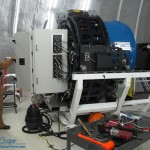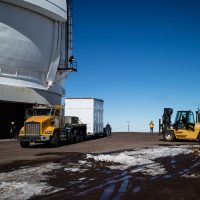Among the claims made against the observatories this is probably another on the top three list… That TMT will be obsolete before it is complete, that the telescope is simply a waste of money.
This claim draws on the public perception that technology is advancing at a breakneck pace and that many devices we use in out daily lives are quickly obsolete in the face of new tech. What many people do not understand is that this does not apply to telescopes, or rather it does, but not in the way you might think.
The telescope itself is simply a light collector, a large mirror that collects the light from distant sources and focuses it for use by an instrument.
The basic optical design of one of the large telescopes atop Mauna Kea has not really changed that much since Laurent Cassegrain sketched it out in 1672. Sure the design has been refined, and made a bit bigger, but totally recognizable as the same in those original drawings from more than three centuries ago.
If the basic design of the telescope has served for centuries one can understand why it will not be obsolete in a few mere decades. The real technology in an observatory is found elsewhere.
Once the light is collected and focused by the telescope it arrives at the instrument. It is this instrument that contains the real technology that does something with that light. The instrument may be a camera, but is more often a spectrograph on the large telescopes.
Inside the instrument one can find the specialized optics and the detector that converts photons into digital information, the science data that can be then stored and studied to tease out the secrets that were brought to us by the light.
It is these instruments that can be updated or replaced regularly. Each observatory takes delivery of new instruments every few years. With delivery of a new instrument containing the latest technologies that observatory can jump right back to the technological front-line in astronomy.
As we learn more the design of instruments changes, and not just as better technology is available. New fields of study in astronomy require new instrumentation to tackle. New discoveries might change the thinking and that new knowledge is incorporated into the next instrument to allow new science not considered before.
Certainly the original designers of Keck or Subaru could not foresee the discoveries of the past decades. This did not stop the instrument designers from building cutting edge instrumentation that is now installed an in use.
Older instruments are routinely upgraded as well, detectors and electronics replaced with newer technology. In this way workhorse instruments delivered to the mauna decades ago can also be updated as new technology becomes available.
The existing eight and ten meter telescopes on Mauna Kea are now decades old. They remain on the leading edge of astronomy thanks to good basic designs and new instruments, they will remain on the front line even into the era of thirty meter telescopes. TMT can potentially remain on leading edge of astronomy for the remainder of the 21st century.
Result: Completely False




